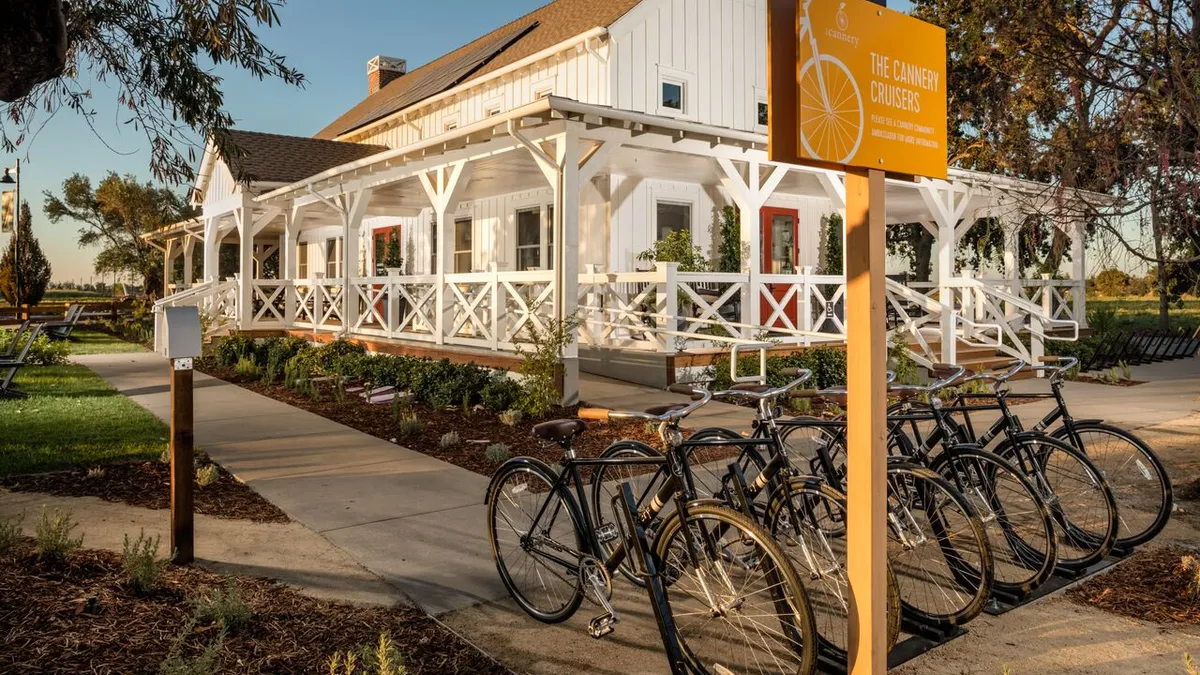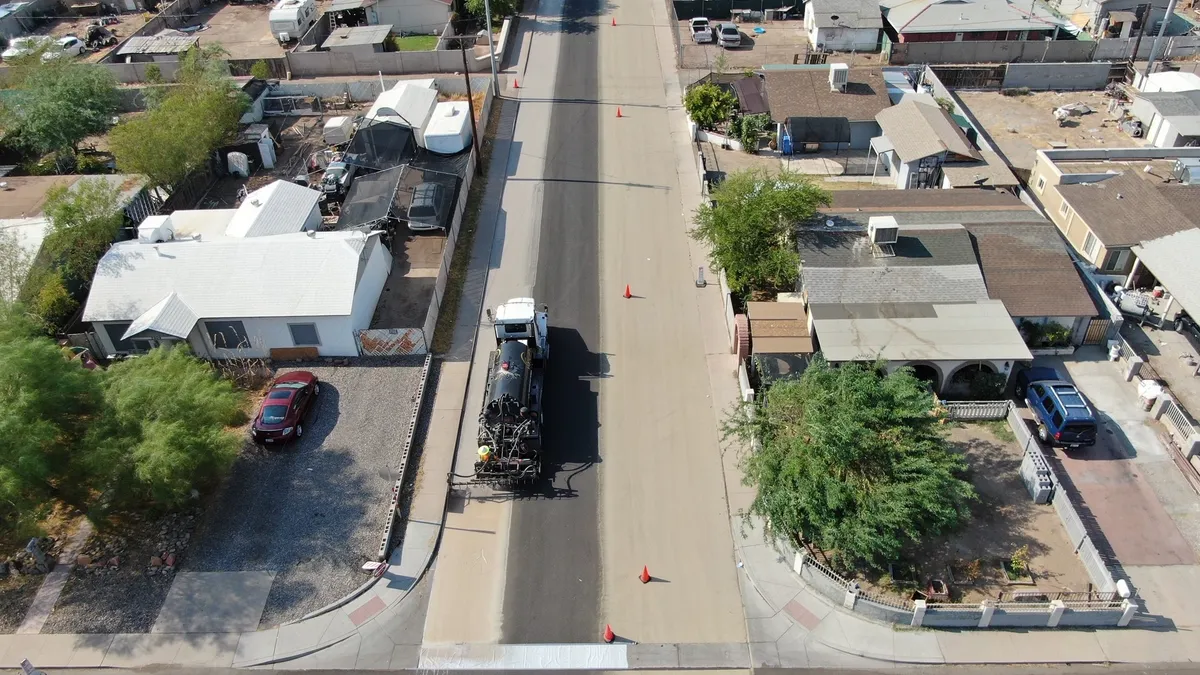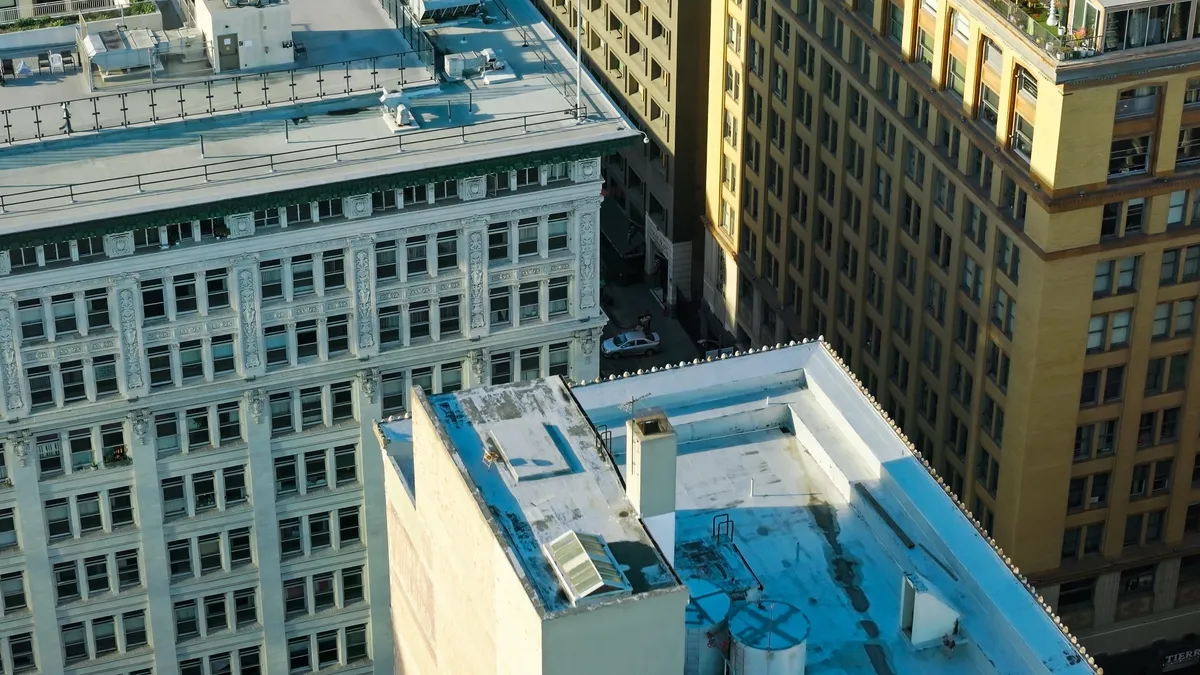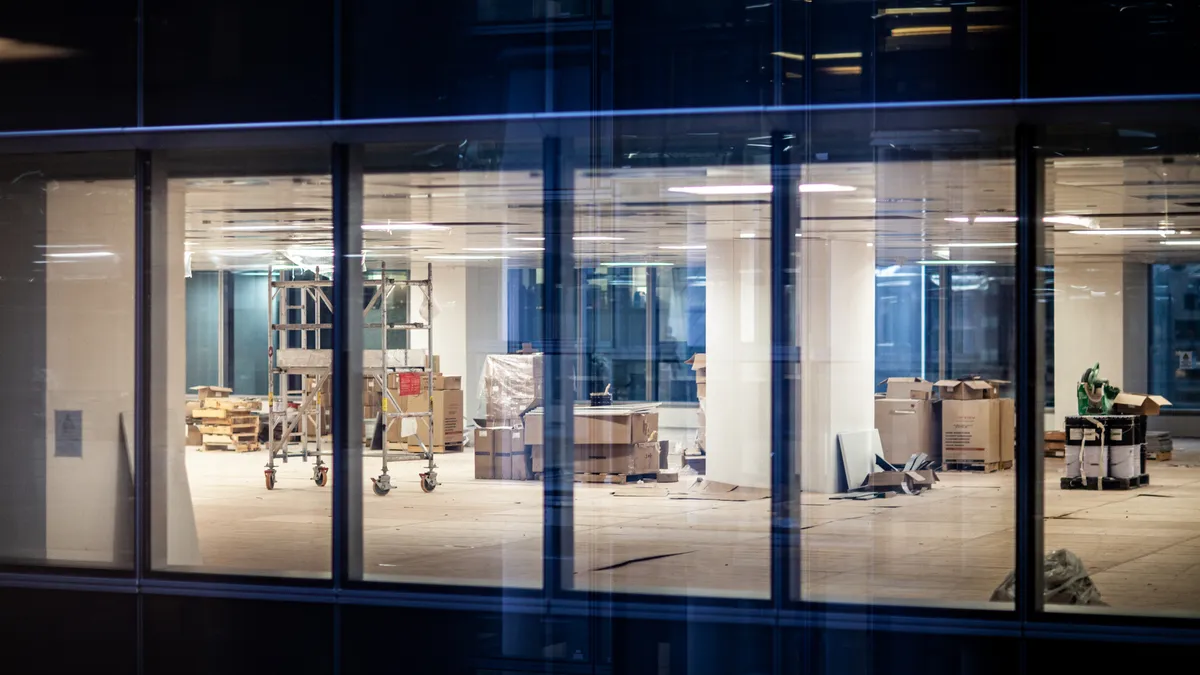A few decades ago, the go-to centerpiece for many master-planned communities was a golf course, with buyers clamoring for homes that backed up to the green whether they were avid players or not.
Today, golf courses have faded from favor in new communities, giving way to more inclusive amenities, such as extensive trail networks, education centers and shared gardens that give residents a connection to the outdoors as well as to their neighbors.
“What we’re seeing is this trend toward helping people interact with each other and helping them interact in natural environments,” said Ken Perlman, a San Diego–based principal at John Burns Real Estate Consulting.
Today, built amenities like pools, clubhouses and fitness centers remain popular. However, Perlman said, the growing use of technology among residents for everyday interactions has them even more eager to shed their phone or laptop and get outdoors. “There is a real desire to be outside, to have their space and to get their breath of fresh air,” he said.
Walkability, with a twist
Walking paths in communities are nothing new, but today’s trails are no longer straight — or end at the town center.
“When you talk about trails, they should be meandering,” said Dan Naef, president of Katy, TX–based Rise Communities, the developer of Meridiana, a 3,000-acre MPC south of Houston. “No one wants to be on a linear trail where they can see what’s coming. We want curvilinear where the landscape changes. We like to create monuments along the way, respites to work out on or take a rest or enjoy art.”
Beyond standard built features, Meridiana’s amenities package focuses on education and engagement, starting with a solar observatory — the physical core of the amenity center — and a handful of learning labs. Residents of all ages can use the labs to experiment and learn. Some programs tie into the Alvin (TX) Independent School District curriculum, of which the already completed Meridiana Elementary is a part. Galileo’s Lab, located along the waterway and accompanying greenway that parallels the community’s main parkway, will include a planetarium, weather station and a dock over the water to conduct water-habitat experiments.
Millennials are one driver of recreational trends in communities around the country. Jessica Lautz, managing director of survey research and communications for the National Association of Realtors, says, for example, that more millennials think parks and recreation facilities are important, as compared to members of the silent generation, or those born between 1925 and 1942. The National Association of Home Builders' Eye On Housing blog reported that community features deemed most influential to millennials are parks, walking trails, playgrounds and outdoor swimming pools.
Rather than cutting down every tree and flattening every ridge, some developers are working with the land as they incorporate green space, parks and trails. For example, The New Home Company’s upcoming Russell Ranch community in Folsom, CA, is rugged and hilly, so the developer is incorporating mountain biking and hiking trails that rise and fall with the topography. This is in sharp contrast to the company’s Davis, CA, community, The Cannery. The half-built, half-sold development leverages its already-flat landscape to cater to everyday walking and biking.
Launching this spring, the second half of Daybreak, a traditional neighborhood development outside Salt Lake City, will play off its mountain setting with a looping walking trail and a separate bicycle lane for uninterrupted riding. These are in addition to the original community’s public gardens, kayaking and 30 miles of trails. The first half of Daybreak began in 2004. Its former owner, Rio Tinto Kennecott, sold the development's 500 homes and remaining 2,500 acres to Värde Partners in June 2016, and a separate company was expected to be formed to develop the additional land and run the community.
“There is a real desire [among residents] to be outside, to have their space and to get their breath of fresh air."

Ken Perlman
Principal, John Burns Real Estate Consulting
In Florida, Babcock Ranch will play to its regional strengths as it builds out, with kayaking, canoeing and paddleboarding, fishing docks, trails and a boardwalk along the water — as well as an on-site solar-power generation facility. The Kitson & Partners community broke ground in November 2015 and has room for 19,500 homes in addition to 6 million square feet of commercial space. Northeast of Austin, TX, is the 2,000-acre Whisper Valley community, whose first phase is currently underway. Developer Taurus Investment Holdings has set aside a third of its acreage to recreation, including 600 acres of parks, trails, streams and other green space.
And don’t forget the pets: Nearly two-thirds of U.S. households have a pet, according to a 2015 survey from the American Pet Products Association, 45% of which are dogs, so dog parks and ample pet waste bag stations are a must. In a recent survey by the National Association of Realtors, one-third of respondents considered proximity to dog parks an important community feature, Lautz said.
Farms come home
Beyond the fitness side of wellness is an increasing desire to understand where our food comes from. Locally grown produce and farm-to-table restaurants are trending nationwide, and the phenomenon is carrying over to farm-centered communities, also known as agrihoods.
The New Home Co.'s The Cannery includes a 7.4-acre farm where residents can observe the harvesting of crops, from pumpkins in the fall to sunflowers in the spring. The farm is managed by the Center for Land-Based Learning, a nearby nonprofit that educates the next generation of farmers and land stewards. Homeowners can stop by the community’s entry monument, a rustic barn, to pick up fresh produce several times a week. Demonstration gardens educate residents on gardening, and there is also a community garden where homeowners can tend their own plots, as well as fruit or nut trees in every yard.
Davis is the epicenter of Central California’s agriculture community, and The Cannery is located on the grounds of a former tomato canning plant. “It got us thinking about being an extension of what we already are,” said Kevin Carson, Northern California division president of The New Home Co. “Why not embrace what’s around us, and that would be a farm.”
Every home is within 300 feet of the community’s walking and biking trail network, and nothing within the community is more than a 10-minute walk away. “We want to make sure residents of Davis enjoy [The Cannery] as much as The Cannery enjoys Davis, so there’s connectivity from our trail network to Davis,” Carson said.
In Loudon County, VA, the 4,000-acre, four-village Willowsford from developer Corbelis has a conservancy and farm, where the public can pick up food or join the community-supported agriculture group, as well as take part in education and nature walks.
During a panel session at the Urban Land Institute’s Fall 2015 meeting, Randall Lewis, executive vice president, marketing for the Lewis Group of Companies, said that, in many cases, the homes themselves are becoming secondary to the lifestyle programming. Six of the developer’s communities focus on healthy lifestyles, including edible landscapes.
The next step in community development
Natural amenities also tend to foster a greater sense of community, whether it’s simply by encouraging more residents to spend time outdoors or through organized events, such as The Cannery’s pumpkin carving and annual 5K and 10K run. Social clubs and recreational teams beyond youth sports are increasingly common, as well.
“Hard amenities are really important, but our biggest focus is activating those amenities and activating those spaces to create an environment where people can meet each other," such as through social clubs and gathering areas, said Jake Wagner, co-CEO and partner of Texas developer Republic Property Group, whose Light Farms community in Celina, TX, will include more than 18 miles of trails and a green belt with 3 miles of hiking and bike paths.
With natural amenities, on the other hand, "you're creating spaces for people to enjoy, for people to meet each other," he said. "For 100% of the people, regardless of age or demographic or interest, that's something everyone can do."
Naturally, preferred amenities vary from region to region, Perlman notes. Swimming pools will always be a must-have in Arizona and Texas, while communities in the Pacific Northwest may opt to focus on connectivity to the mountains.
Though natural amenities will likely not be the sole reason a buyer chooses a particular MPC, the features contribute to the community’s overall feel and culture, which help drive purchasing decisions. Plus, they’re increasingly the lead hook on community marketing websites.
“What’s the most important thing when you go home? You want to feel relaxed and comfortable,” Perlman said. “All of those things are contributing to creating a place that people say, ‘This is where I feel comfortable, where I feel relaxed.’”



















